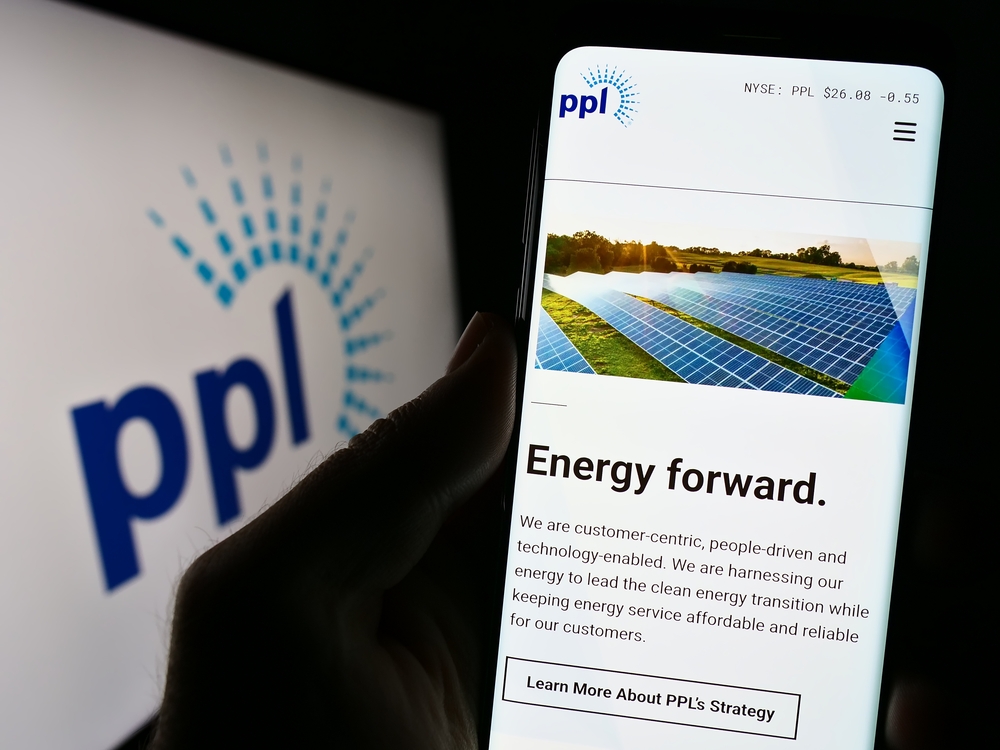
Founded in 1920 and headquartered in Allentown, Pennsylvania, PPL Corporation (PPL) provides electricity and natural gas to approximately 3.5 million customers in the United States. With a market cap of $25.7 billion, the company operates through three segments: Kentucky Regulated, Pennsylvania Regulated, and Rhode Island Regulated.
Companies with a market value of $10 billion or more are classified as “large-cap stocks,” and PPL is a prominent member of this category. PPL's competitive edge stems from its fully regulated utility operations, providing stable revenue streams and predictable cash flows. The company maintains strong financial stability, delivers consistent dividends, and operates within a favorable regulatory framework that ensures effective cost recovery.
PPL is currently trading 3.2% below its 52-week high of $35.91, recorded recently on Mar. 4. The stock has surged 7.2% over the three months, substantially outpacing the broader Nasdaq Composite’s ($NASX) fall of 9.1% over the same time frame.

The stock’s prospects look more appealing in the long term. Over the past six months, PPL has surged 7.1%, outperforming NASX, which declined marginally. Moreover, over the past year, PPL has gained 28.7%, beating NASX's 8.4% increase over the same period.
The stock has been trading above its 200-day moving average since the past year and above its 50-day moving average since January-end, indicating an uptrend.

PPL Corporation has outpaced the broader market over the past year, fueled by strategic initiatives and rising demand. The company is benefiting from load growth, driven by surging data center demand in its Pennsylvania and Kentucky service areas, with more than 17 GW of potential projects lined up for 2026-2033.
PPL stock declined marginally following its Q4 earnings on Feb. 13. The company reported an 8.9% increase in its operating revenues, which amounted to $2.2 billion. Moreover, the company expects a 7% increase in its EPS for fiscal 2025. PPL’s EPS amounted to $0.34, falling short of Wall Street estimates by 8.1%.
In response to rising power demand, PPL announced a nearly 40% increase in its 2025-2028 infrastructure investment plan, totaling $20 billion, to enhance grid resilience and support electrification efforts. The company also raised its dividend by 6% to $0.27 per share and projects 2025 earnings between $1.75 and $1.87 per share, extending its 6% to 8% annual earnings per share and dividend growth targets through at least 2028.
Further, its top rival, The Southern Company (SO) has lagged behind, with its shares declining marginally over the past six months but surging 27.8% over the past 52 weeks.
Analysts are maintaining a moderately optimistic outlook on the stock's prospects. Of the 16 analysts covering it, the consensus rating is “Moderate Buy.” It has a mean price target of $36.88, which indicates a potential upside of 6.1% from its current level.
On the date of publication, Kritika Sarmah did not have (either directly or indirectly) positions in any of the securities mentioned in this article. All information and data in this article is solely for informational purposes. For more information please view the Barchart Disclosure Policy here.




/Tesla%20Inc%20tesla%20by-%20Iv-olga%20via%20Shutterstock(1).jpg)
/Stickers%20with%20AMD%20Radeon%20and%20Nvidia%20GeForce%20RTX%20graphics%20on%20new%20laptop%20computer%20by%20Piotr%20Swat%20via%20Shutterstock.jpg)

/Nvidia%20logo%20by%20Konstantin%20Savusia%20via%20Shutterstock.jpg)